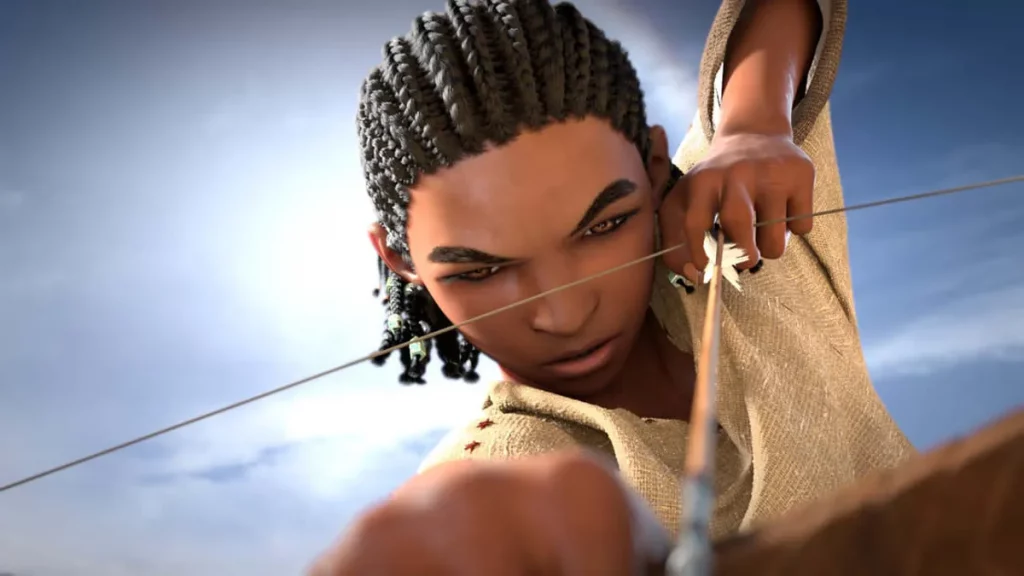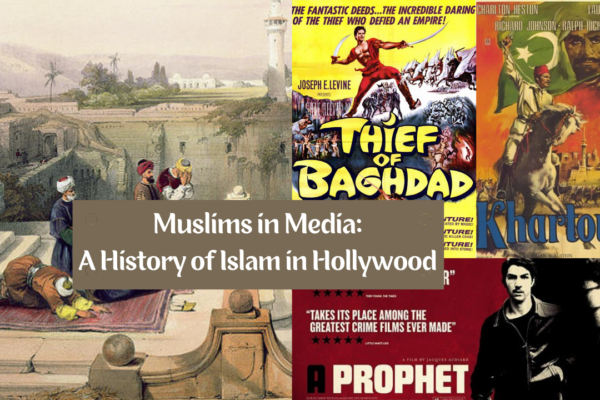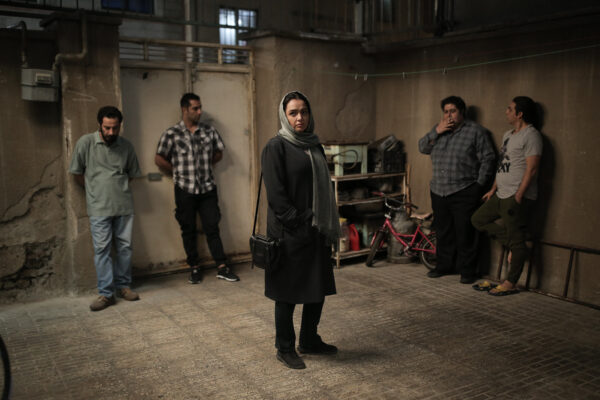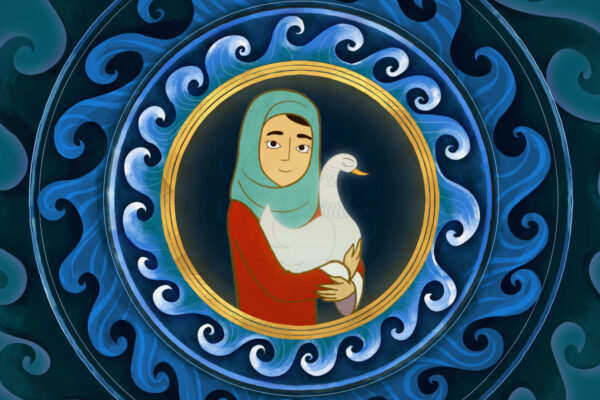“To create animation movies about heroes that history has forgotten … we’re trying to actually search for heroes from all around the world that are still only read in books and try to reproduce their movies and their stories and an inspiring way through animation.”
“To create animation movies about heroes that history has forgotten … we’re trying to actually search for heroes from all around the world that are still only read in books and try to reproduce their movies and their stories and an inspiring way through animation.”
Bilal: A New Breed of Hero, directed by Khurram H. Alavi and Ayman Jamal, tells the story of Bilal ibn Rabah, the companion of Prophet Muhammad (s). Bilal had to struggle against slavery and injustice until his freedom and elevation to the rank of the first Muazzin in Islamic history.
The animated film begins with Bilal as a young boy living with his mother Hamama and his sister Ghufaira. His mother is killed, and Bilal and his sister are enslaved and sold to Umayya, a wealthy leader of Quraysh. He lives and serves his strict and harsh master Umayya in Makkah, where enslaved people and the poor were abused and treated harshly.
Bilal grows up to become a stronger and wiser man and meets Al-Saddiq, who represents the famous companion Abu Bakr. Al-Saddiq teaches Bilal the essence of Islam and guides him towards the new movement’s path. The film intentionally avoids too many references to Islam and never depicts Prophet Muhammad (s), and attempts to present the ideas of equality and freedom that Islam promotes.
In some ways, this could be seen as trying to broaden the film’s reach to a wider non-Muslim audience. Still, in any case, the story’s focus is Bilal and his personal struggle for freedom and greatness amongst the significant era that Islam was born in.
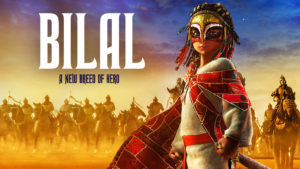
What the producers of Bilal have attempted to do and in many ways have been successful is to create role models for youth through the medium of animation that is not based on myths or fiction, but based on actual characters and individuals in history that became heroes in real life and not merely in some writer’s imagination and comic book story:
Ayman Jamal states:
I was targeting the youth… mainly children and youth watch movies and animation movies that are fictional heroes, so the idea was what if we actually try to fill the gap of actually creating animation movies about real heroes that inspire kids and their stories are very inspiring and full of fantasies at the same time.”
The film Braveheart (1995) inspired the director Ayman Jamal to produce the Bilal movie and aim it at youth. The producers wanted to use real-life characters, stories, and personalities that do not usually get mentioned, especially in an era where Disney characters and Marvel superheroes are the only personalities that the youth have grown up to idolise and look up to. More people know about the numerous films and comic books depicting Spiderman than they do about the many great personalities who sacrificed their wealth and lives to support the Prophet in establishing the message of Allah.
Even within other faiths, like Christianity, it wouldn’t be surprising to know that more youth would know the names of the Marvel Avengers than the twelve apostles of Prophet Jesus (as). And that’s where films like Bilal come in. It mixes a suitable amount of education, entertainment, and history for the young audience, as Ayman Jamal states:
We’ve entered into the industry of animation because we wanted to create animation that matters and stories that inspire kids and youth.”
The animated film depicts Bilal’s mother as a wise and respectful person. We witness Bilal’s struggle to protect and eventually free his sister. Other than these characters, the film does not represent any other female characters. InshAllah that is something that the producers will aim to address in future productions.
The scene depicting the epic battle of Badr in the Bilal movie is an excellent example of art imitating art, imitating life. The scene depicting angels riding to assist the outnumbered Muslims against the Makkan army in the battle of Badr demonstrates inspiration from the scene depicting The Army of the Dead in the third The Lord of the Rings film, The Return of the King, when an army of spirits assists Aragorn in saving the besieged Minas Tirith. And yet before J. R. R. Tolkien, a devout Catholic was not even born, let alone have the idea to write the battle scene, the Holy Quran mentions the assistance from the angels given to the Muslims during the battle of Badr in Surah Aale Imran:
For God had helped you during the Battle of Badr at a time when you were helpless. So act in compliance with the laws of God; you may well be grateful. Remember when you said to the faithful: “Is it not sufficient that your Lord should send for your help three thousand angels from the heavens?”
(Holy Quran 3:123-124)
Bilal: A New Breed of Hero animated version is undoubtedly an action-packed and adventure-filled movie for the family. There are some battled scenes, but the filmmakers avoided bloody and gory depictions. This animated movie was produced by Dubai-based Barajoun Entertainment. It came out around the same time as another animated movie, Princess of Rome, produced in Iran.
The budget and scale of Bilal was the biggest animated film produced in North Africa and West Asia. 360 people worked on the project, and a new team and studio were created in Dubai for the production. The film has some notable achievements. One of the longest battle scenes that lasted over eleven minutes took one and a half years to produce, almost a third of the time to produce the entire movie.
The film aims to be accurate, but as is the nature of filmmaking, sometimes creatively license is applied. Still, overall the film seeks to provide an educational and entertaining insight into the life and struggles of the great companion Bilal ibn Rabah. Ayman Jamal reiterates:
To create animation movies about heroes that history has forgotten … we’re trying to actually search for heroes from all around the world that are still only read in books and try to reproduce their movies and their stories and an inspiring way through animation.”
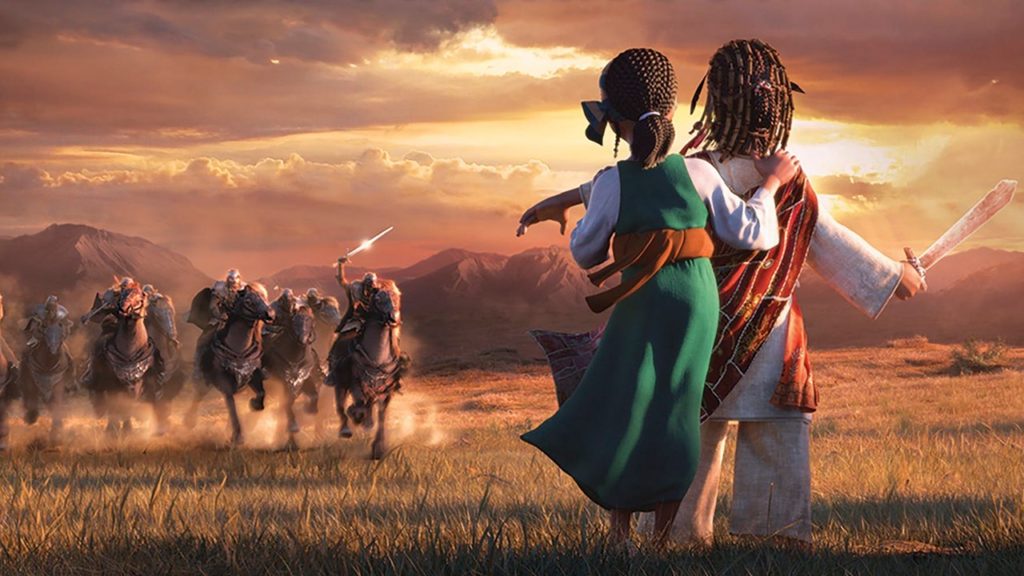
We should encourage our children to watch more animated movies like Bilal to encourage producers to produce more such films.
You can watch Bilal: A New Breed of Hero on USHUB.
Quotes for Ayman Jamal were taken from here.
